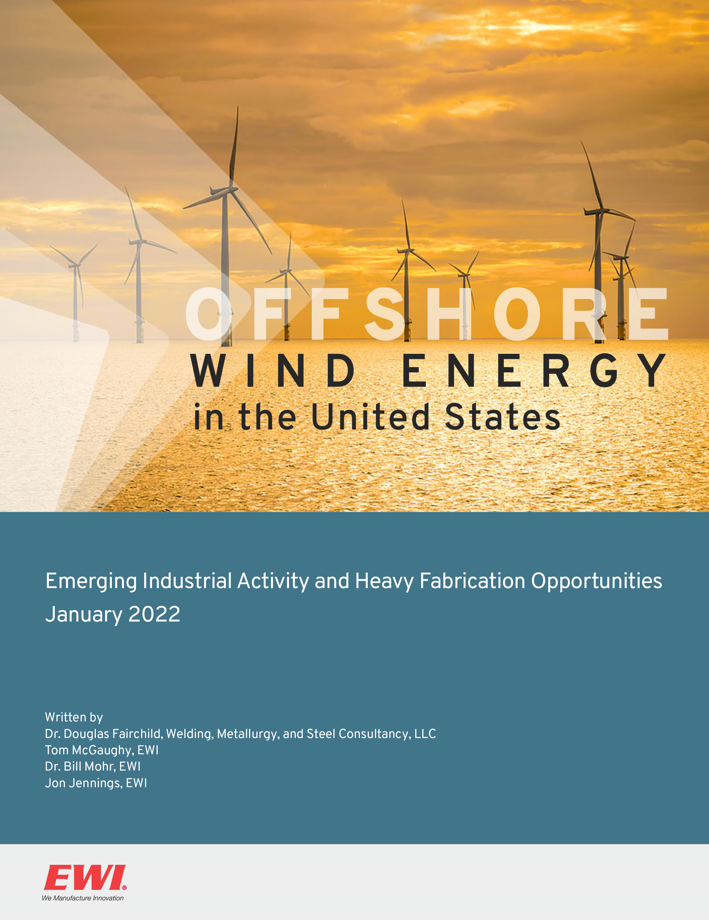

EWI has released an in-depth report on the state of the U.S. offshore wind (OSW) industry. Published earlier this month, Offshore Wind Energy in the United States: Emerging Industrial Activity and Heavy Fabrication Opportunities, predicts an imminent tipping point that will create a new, hundred-billion-dollar industry involving heavy fabrication as its core activity.
To date, the U.S. has only seven operating OSW turbines, compared to thousands currently in Europe and Asia. However, offshore wind industry is poised to boom on a national scale in the next few years. The EWI report discusses how previous barriers such as government permitting, high development costs, and resistance from stakeholders (fisheries, environmental groups, etc.) are waning, and why. Today, the U.S. OSW industry has the potential to create tens-of-thousands of jobs in industrial activities such as steel manufacturing, heavy fabrication, and ship building.
Offshore Wind Energy in the United States is unique from other industry reports in that it focuses on the challenges facing the companies that will build the necessary infrastructure — specifically, substructures (monopiles, jackets, gravity base), nacelle towers, and marine vessels. With decades of expertise in materials, welding engineering, nondestructive examination, and structural design analysis to back its findings, the EWI report details the complications involved when fabricating large structures with thick (100-150mm) steel that will need to withstand 20+ years of harsh, offshore service.
Topics covered include:
- Offshore wind structure design
- The Jones Act and implications for the U.S. marine vessel industry
- Levelized cost of energy and capital expenditures for OSW heavy fabrication
- Heavy fabrication cost reduction opportunities
- Forming/rolling equipment for thick plate applications and the effect on welding productivity
- Robotic welding and allied technologies (e.g., computerized coordination with positioning equipment)
- Narrow groove welding technologies (e.g., high heat input submerged arc welding)
- Optimization of interacting variables: structural design, steel type, forming/rolling equipment, weld bevel design and machining, weld fixturing, preheat requirements and equipment, weld consumables and storage/handling protocols, welding process selection and equipment, and non-destructive examination technology
Download the report for FREE by completing the form below:
The report offers critical information and insight to fabricators that are involved in designing and/or equipping fabrication facilities for OSW equipment manufacturers and suppliers. It is a valuable resource that can help fabricators learn from known successes and failures within the sector, optimize facility design, and make informed investment choices regarding advanced fabrication technologies.
For more information, contact Jon Jennings at [email protected].